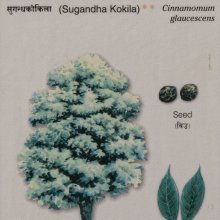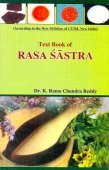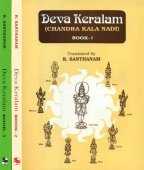Kokila, Kokilā: 31 definitions
Introduction:
Kokila means something in Buddhism, Pali, Hinduism, Sanskrit, the history of ancient India, Marathi, Hindi, biology. If you want to know the exact meaning, history, etymology or English translation of this term then check out the descriptions on this page. Add your comment or reference to a book if you want to contribute to this summary article.
Alternative spellings of this word include Kokil.
Images (photo gallery)
In Hinduism
Natyashastra (theatrics and dramaturgy)
Source: Wisdom Library: Nāṭya-śāstraKokila (कोकिल) is the name of a cloud whose sound corresponds to the Vāma or Vāmaka note made by drums (puṣkara) according to the Nāṭyaśāstra chapter 33. Accordingly, “after seeing that the Mṛdaṅgas, Paṇavas and Dardaras have been made, the great sage Svāti brought about a similarity of their notes with those of clouds... The cloud named Puṣkara gave note to Vāma (Vāmaka)... Those who want Success of performances should make to these clouds, offerings which are dear to spirits (bhūta)”.
Source: archive.org: The mirror of gesture (abhinaya-darpana)One of the Hands that indicate Flying Creatures.—Kokila, the Arāla hand fluttered.

Natyashastra (नाट्यशास्त्र, nāṭyaśāstra) refers to both the ancient Indian tradition (shastra) of performing arts, (natya—theatrics, drama, dance, music), as well as the name of a Sanskrit work dealing with these subjects. It also teaches the rules for composing Dramatic plays (nataka), construction and performance of Theater, and Poetic works (kavya).
Ayurveda (science of life)
Veterinary Medicine (The study and treatment of Animals)
Source: Shodhganga: Portrayal of Animal Kingdom (Tiryaks) in Epics An Analytical study1) Kokila (कोकिल) (lit. “one who attracts mind by its, koka or calls”) refers to the [Female] Cuckoo, according to scientific texts such as the Mṛgapakṣiśāstra (Mriga-pakshi-shastra) or “the ancient Indian science of animals and birds” by Hamsadeva, containing the varieties and descriptions of the animals and birds seen in the Sanskrit Epics such as the Ramayana and Mahabharata.
2) Kokila (कोकिल) also refers to the Koel (Eudynamys Scolopaceus).
Unclassified Ayurveda definitions
Source: Wisdom Library: Āyurveda and botanyKokila (कोकिल) is a Sanskrit word referring to a kind of bird. The meat of this animal is part of the māṃsavarga (‘group of flesh’), which is used throughout Ayurvedic literature. The animal Kokila is part of the sub-group named Pratuda, refering to animals “who eat while striking”. It was classified by Caraka in his Carakasaṃhitā sūtrasthāna (chapter 27), a classical Ayurvedic work. Caraka defined such groups (vargas) based on the dietic properties of the substance.
Source: gurumukhi.ru: Ayurveda glossary of termsKokila (कोकिल):—Wood charcoal

Āyurveda (आयुर्वेद, ayurveda) is a branch of Indian science dealing with medicine, herbalism, taxology, anatomy, surgery, alchemy and related topics. Traditional practice of Āyurveda in ancient India dates back to at least the first millenium BC. Literature is commonly written in Sanskrit using various poetic metres.
Dharmashastra (religious law)
Source: Wisdom Library: Dharma-śāstraKokila (कोकिल) refers to “coal”. The word is used throughout Dharmaśāstra literature such as the Manusmṛti. (See the Manubhāṣya, verse 8.250)
Source: Prācyā: Animals and animal products as reflected in Smṛti textsKokila (कोकिल) refers to the bird “Cuckoo” (Eudynamys scolopacea).—Birds have been described in several ancient Sanskrit texts that they have been treated elaborately by eminent scholars. These birds [viz., Kokila] are enumerated in almost several Smṛtis in context of specifying the expiations for killing them and their flesh being used as a dietary article to give satisfaction to the manes (Pitṛs) in Śrāddha rites. These are elaborated especially in the Manusmṛti, Parāśarasmṛti [chapter VI], Gautamasmṛti [chapter 23], Śātātapasmṛti [II.54-56], Uśānasmṛti [IX.10-IX.12], Yājñavalkyasmṛti [I.172-I.175], Viṣṇusmṛti [51.28-51.29], Uttarāṅgirasasmṛti [X.16].

Dharmashastra (धर्मशास्त्र, dharmaśāstra) contains the instructions (shastra) regarding religious conduct of livelihood (dharma), ceremonies, jurisprudence (study of law) and more. It is categorized as smriti, an important and authoritative selection of books dealing with the Hindu lifestyle.
Purana and Itihasa (epic history)
Source: archive.org: Puranic EncyclopediaKokila (कोकिल).—See under Ḍiṇḍika.
Source: archive.org: Shiva Purana - English Translation1) Kokila (कोकिल) is the name of a leader of Gaṇas (Gaṇapa or Gaṇeśvara or Gaṇādhipa) who came to Kailāsa, according to the Śivapurāṇa 2.1.20. Accordingly, after Śiva decided to become the friend of Kubera:—“[...] The leaders of Gaṇas revered by the whole world and of high fortune arrived there. [...] Sannāha and Kumuda with a hundred crores, Amogha, Kokila and Sumantraka each with a crore. [...]”.
These [viz., Kokila] and other leaders of Gaṇas [viz., Gaṇapas] were all powerful (mahābala) and innumerable (asaṃkhyāta). [...] The Gaṇa chiefs and other noble souls of spotless splendour eagerly reached there desirous of seeing Śiva. Reaching the spot they saw Śiva, bowed to and eulogised him.
Kokila participated in Vīrabhadra’s campaign against Dakṣa, according to the Śivapurāṇa 2.2.33. Accordingly, as Brahmā narrated to Nārada:—“O Nārada, listen to the numerical strength of the most important and courageous of those groups. [...] Sannāha with hundred crores; Kumuda with a crore; Amogha and Kokila the chief of Gaṇas each with a crore of crores. [...] Thus at the bidding of Śiva, the heroic Vīrabhadra went ahead followed by crores and crores, thousands and thousands, hundreds and hundreds of Gaṇas [viz., Kokila]”.
2) Kokila (कोकिल) refers to “cuckoos”, according to the Śivapurāṇa 2.2.22. Accordingly as Śiva said to Sitā:—“[...] O my beloved, beautiful woman, clouds will not reach the place where I have to make an abode for you. [...] O beloved, do you wish to go to the Himālayas, the king of mountains wherein there is spring for ever, which abounds in hedges and groves where the cuckoos (kokila) coo in diverse pleasing ways and which contains many lakes filled with cool water and hundreds of lotuses”.
Source: Cologne Digital Sanskrit Dictionaries: The Purana IndexKokila (कोकिल).—Said ‘kuha’, and the time came to be known kuhū.*
- * Brahmāṇḍa-purāṇa II. 25. 29; 28. 58.

The Purana (पुराण, purāṇas) refers to Sanskrit literature preserving ancient India’s vast cultural history, including historical legends, religious ceremonies, various arts and sciences. The eighteen mahapuranas total over 400,000 shlokas (metrical couplets) and date to at least several centuries BCE.
Chandas (prosody, study of Sanskrit metres)
Source: Journal of the University of Bombay Volume V: Apabhramsa metres (2)Kokila (कोकिल) is the name of a catuṣpadi metre (as popularly employed by the Apabhraṃśa bards), as discussed in books such as the Chandonuśāsana, Kavidarpaṇa, Vṛttajātisamuccaya and Svayambhūchandas.—Kokila has 25 mātrās in each of their four lines, divided into groups of 4, 5, 5, 4, 3 (IS) mātrās.

Chandas (छन्दस्) refers to Sanskrit prosody and represents one of the six Vedangas (auxiliary disciplines belonging to the study of the Vedas). The science of prosody (chandas-shastra) focusses on the study of the poetic meters such as the commonly known twenty-six metres mentioned by Pingalas.
In Buddhism
Theravada (major branch of Buddhism)
Source: Pali Kanon: Pali Proper NamesDaughter of Ekaraja and sister of Candakumara. J.vi.134.
Theravāda is a major branch of Buddhism having the the Pali canon (tipitaka) as their canonical literature, which includes the vinaya-pitaka (monastic rules), the sutta-pitaka (Buddhist sermons) and the abhidhamma-pitaka (philosophy and psychology).
Tibetan Buddhism (Vajrayana or tantric Buddhism)
Source: Brill: Śaivism and the Tantric Traditions (tantric Buddhism)Kokila (कोकिल) refers to a type of bird, according to the Bhūśalyasūtrapātananimittavidhi section of Jagaddarpaṇa’s Ācāryakriyāsamuccaya, a text within Tantric Buddhism dealing with construction manual for monasteries etc.—Accordingly, “[...] Songs of a jīvaṃjīvaka bird, peacock, kokila bird, parrot, cakrāṅka, haṃsa, and a bull bring auspiciousness. If [these creatures] are seen, it brings prosperity. [...]”.

Tibetan Buddhism includes schools such as Nyingma, Kadampa, Kagyu and Gelug. Their primary canon of literature is divided in two broad categories: The Kangyur, which consists of Buddha’s words, and the Tengyur, which includes commentaries from various sources. Esotericism and tantra techniques (vajrayāna) are collected indepently.
India history and geography
Source: Shodhganga: Vernacular architecture of Assam with special reference to Brahmaputra ValleyKokila is a Deori term referring to “bamboo bracing”.—It appears in the study dealing with the vernacular architecture (local building construction) of Assam whose rich tradition is backed by the numerous communities and traditional cultures.

The history of India traces the identification of countries, villages, towns and other regions of India, as well as mythology, zoology, royal dynasties, rulers, tribes, local festivities and traditions and regional languages. Ancient India enjoyed religious freedom and encourages the path of Dharma, a concept common to Buddhism, Hinduism, and Jainism.
Biology (plants and animals)
Source: Google Books: CRC World Dictionary (Regional names)1) Kokila in India is the name of a plant defined with Lepidium sativum in various botanical sources. This page contains potential references in Ayurveda, modern medicine, and other folk traditions or local practices It has the synonym Crucifera nasturtium E.H.L. Krause (among others).
2) Kokila is also identified with Stereospermum suaveolens It has the synonym Stereospermum suaveolens (Roxb.) DC..
Example references for further research on medicinal uses or toxicity (see latin names for full list):
· Acta Facultatis Rerum Naturalium Universitatis Comenianae, Botanica (1986)
· Acta Biologica Cracoviensia, Series Botanica (1980)
· Deutschlands Flora, Abtheilung II, Cryptogamie (1902)
· Species Plantarum (1753)
· Taxon (1982)
· Chromosoma (1977)
If you are looking for specific details regarding Kokila, for example health benefits, pregnancy safety, diet and recipes, side effects, chemical composition, extract dosage, have a look at these references.

This sections includes definitions from the five kingdoms of living things: Animals, Plants, Fungi, Protists and Monera. It will include both the official binomial nomenclature (scientific names usually in Latin) as well as regional spellings and variants.
Languages of India and abroad
Pali-English dictionary
Source: BuddhaSasana: Concise Pali-English Dictionarykokila : (m.) a cuckoo.
Source: Sutta: The Pali Text Society's Pali-English DictionaryKokila, (cp. Sk. koka a kind of goose, also cuckoo, with derivation kokila cuckoo; cp. Gr. kόkkuc, Lat. cuculus, E. cuckoo) the Indian cuckoo. Two kinds mentioned at VvA. 57: kāḷa° and phussa° black and speckled k. ‹-› As citra° at J. V, 416.—Vv 111, 588; VvA. 132, 163. (Page 227)

Pali is the language of the Tipiṭaka, which is the sacred canon of Theravāda Buddhism and contains much of the Buddha’s speech. Closeley related to Sanskrit, both languages are used interchangeably between religions.
Marathi-English dictionary
Source: DDSA: The Molesworth Marathi and English Dictionarykōkila (कोकिल).—m (S) pop. kōkilā or ḷā & kōkīḷa m Black or Indian cuckoo, Endynamis orientalis.
Source: DDSA: The Aryabhusan school dictionary, Marathi-Englishkōkila (कोकिल) [-lā-ḷā, -ला-ळा].—m Black or Indian cuckoo.
--- OR ---
kōkīḷa (कोकीळ).—m Black or Indian cuckoo.
Marathi is an Indo-European language having over 70 million native speakers people in (predominantly) Maharashtra India. Marathi, like many other Indo-Aryan languages, evolved from early forms of Prakrit, which itself is a subset of Sanskrit, one of the most ancient languages of the world.
Sanskrit dictionary
Source: DDSA: The practical Sanskrit-English dictionaryKokila (कोकिल) or Kokilā (कोकिला).—[kula-ilac Uṇādi-sūtra 1.54.]
1) The (Indian or black) cuckoo; पुंस्कोकिलो यन्मधुरं चुकूज (puṃskokilo yanmadhuraṃ cukūja) Kumārasambhava 3.32;4.16; R.12.39.
2) A fire-brand.
Derivable forms: kokilaḥ (कोकिलः).
Source: Cologne Digital Sanskrit Dictionaries: Shabda-Sagara Sanskrit-English DictionaryKokila (कोकिल).—m.
(-laḥ) 1. The Kokila or Koil, the black or Indian cuckoo, (Cuculus Indicus.) 2. A firebrand, a lighted coal. E. kuk to seize, (the heart,) and ilac affix: the Kokila makes a prominent figure in Hindu poetry, and is supposed, by his musical cry, to inspire pleasing and tender emotions.
Source: Cologne Digital Sanskrit Dictionaries: Benfey Sanskrit-English DictionaryKokila (कोकिल).—i. e. koka + ila, m. 1. The Indian cuckoo, [Rāmāyaṇa] 2, 52, 2. f. lā, The female cuckoo, [Bhartṛhari, (ed. Bohlen.)] 1, 34. 2. A kind of mouse, [Suśruta] 2, 274, 4. 3. A poisonous insect. [Suśruta] 2, 288, 7.
Source: Cologne Digital Sanskrit Dictionaries: Cappeller Sanskrit-English DictionaryKokila (कोकिल).—[masculine] ā [feminine] the Indian cuckoo.
Source: Cologne Digital Sanskrit Dictionaries: Aufrecht Catalogus Catalogorum1) Kokila (कोकिल) as mentioned in Aufrecht’s Catalogus Catalogorum:—See Mṛtyuṃjaya Kokila.
2) Kokila (कोकिल):—poet. Mentioned in Bhojaprabandha Oxf. 150^b.
3) Kokila (कोकिल):—Mātrādiśrāddhanirṇaya. Bhk. 24.
Source: Cologne Digital Sanskrit Dictionaries: Monier-Williams Sanskrit-English Dictionary1) Kokila (कोकिल):—m. (onomatopoetic; √kuk, [Uṇādi-sūtra]) the Kokila or Koïl (black or Indian cuckoo ; frequently alluded to in Hindū poetry, its musical cry being supposed to inspire tender emotions), [Mahābhārata; Rāmāyaṇa] etc.
2) a kind of mouse, [Suśruta; Aṣṭāṅga-hṛdaya]
3) a kind of snake, [Demetrius Galanos’s Lexiko: sanskritikes, anglikes, hellenikes]
4) a kind of venomous insect, [Suśruta]
5) a kind of sugar-cane (cf. lekṣu), [Demetrius Galanos’s Lexiko: sanskritikes, anglikes, hellenikes]
6) a lighted coal, [cf. Lexicographers, esp. such as amarasiṃha, halāyudha, hemacandra, etc.]
7) Name of an author, [Bhojaprabandha; Śūdra-dharma-tattva]
8) of a Rāja-putra (considered as a Ṛṣi), [Kāṭhaka; Anukramaṇikā]
9) of a mouse, [Mahābhārata v, 5444]
10) Kokilā (कोकिला):—[from kokila] a f. ([gana] ajādi) the female of a Kokila, [Kumāra-sambhava; Raghuvaṃśa; Bhartṛhari]
11) [from kokila] b (f. of kokila q.v.)
Source: Cologne Digital Sanskrit Dictionaries: Yates Sanskrit-English DictionaryKokila (कोकिल):—(laḥ) 1. m. The cuckoo; a fire brand, a lighted coal.
Source: DDSA: Paia-sadda-mahannavo; a comprehensive Prakrit Hindi dictionary (S)Kokila (कोकिल) in the Sanskrit language is related to the Prakrit words: Koila, Koilā.
[Sanskrit to German]
Sanskrit, also spelled संस्कृतम् (saṃskṛtam), is an ancient language of India commonly seen as the grandmother of the Indo-European language family (even English!). Closely allied with Prakrit and Pali, Sanskrit is more exhaustive in both grammar and terms and has the most extensive collection of literature in the world, greatly surpassing its sister-languages Greek and Latin.
Hindi dictionary
Source: DDSA: A practical Hindi-English dictionaryKokila (कोकिल) [Also spelled kokil]:—[[~lā]] (nm), kokila: (nf) see [koyala; ~kaṃṭha/~kaṃṭhī] sweet-spoken as a cuckoo; ~[bainī] same is ~[kaṃṭhī].
...
Kannada-English dictionary
Source: Alar: Kannada-English corpusKōkila (ಕೋಕಿಲ):—
1) [noun] any of various large cuckoos (mainly either Cuculus tenuirostris or C. lathami) (genus Eudynamys) of India, that lay eggs in the nests of other birds and is noted for its characteristic soft cry; Indian cuckoo; a koel.
2) [noun] a burning piece of wood; a fire-brand.
--- OR ---
Kōkiḷa (ಕೋಕಿಳ):—[noun] = ಕೋಕಿಲ - [kokila -] 1.
Kannada is a Dravidian language (as opposed to the Indo-European language family) mainly spoken in the southwestern region of India.
See also (Relevant definitions)
Starts with (+26): Kokila Vagga, Kokilaaksha, Kokilabhivyaharin, Kokiladevi, Kokiladevimahatmyasamgraha, Kokiladhvani, Kokilahautra, Kokilahotra, Kokilaka, Kokilaksah, Kokilaksha, Kokilakshah, Kokilakshaka, Kokilakshi, Kokilalapa, Kokilam, Kokilamahatmya, Kokilamaitravaruna, Kokilamatoktashraddhavidhi, Kokilanantam.
Ends with: Avakokila, Gandhakokila, Grihakokila, Kalakokila, Kanthakokila, Lambikakokila, Mattakokila, Mrityujaya kokila, Mrityumjayakokila, Navakokila, Nyayakokila, Pumskokila, Rajivakokila, Sugandha kokila, Sugandhakokila, Unatakokila, Unnatakokila, Vidyakokila.
Full-text (+184): Koila, Kaukila, Pumskokila, Kokilavasa, Anyabhrit, Utkuja, Kokilam, Kokilekshu, Kokilarahasya, Kokilavrata, Kokiladevi, Kokilamahatmya, Gandhakokila, Unnatakokila, Caladvisha, Madakalakokilakujita, Parapushta, Tunatunayati, Acalatvish, Kokilaksha.
Relevant text
Search found 45 books and stories containing Kokila, Kokilā, Kōkila, Kōkīḷa, Kokīla, Kōkiḷa; (plurals include: Kokilas, Kokilās, Kōkilas, Kōkīḷas, Kokīlas, Kōkiḷas). You can also click to the full overview containing English textual excerpts. Below are direct links for the most relevant articles:
Garga Samhita (English) (by Danavir Goswami)
Verses 2.10.14-17 < [Chapter 10 - Description of Śrī Kṛṣṇa’s Herding the Cows]
Verses 2.17.15-17 < [Chapter 17 - The Meeting of Śrī Rādhā-Kṛṣṇa]
Verse 2.1.1 < [Chapter 1 - Description of the Entrance in Vṛndāvana]
Animal Kingdom (Tiryak) in Epics (by Saranya P.S)
Chapter 4.28 - The Kokila (Koel) in the Epics
Chapter 4.20 - Animals and birds in the epic Ramayana (Introduction)
Amarakoshodghatana of Kshirasvamin (study) (by A. Yamuna Devi)
Flora (5): Trees < [Chapter 5 - Aspects of Nature]
Vasudevavijaya of Vasudeva (Study) (by Sajitha. A)
Sandhi (e): Vyañjanasandhi < [Chapter 3 - Vāsudevavijaya—A Grammatical Study]
Sahitya-kaumudi by Baladeva Vidyabhushana (by Gaurapada Dāsa)
Text 10.93 < [Chapter 10 - Ornaments of Meaning]
Text 11.10 < [Chapter 11 - Additional Ornaments]
Text 7.140 < [Chapter 7 - Literary Faults]
Sanskrit sources of Kerala history (by Suma Parappattoli)
3. The Kokila-sandesa by Uddanda < [Chapter 4 - Traces of Historical Facts from Sandesha Kavyas and Short poems]
Appendix 1 - Sanskrit Works bearing on Kerala History
1. Introduction to Sandesha Kavyas < [Chapter 4 - Traces of Historical Facts from Sandesha Kavyas and Short poems]
Related products


